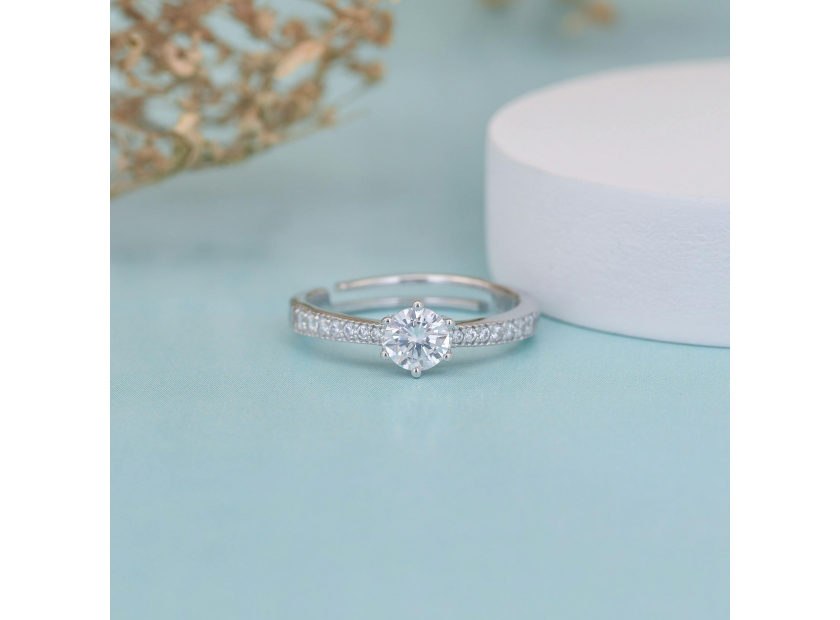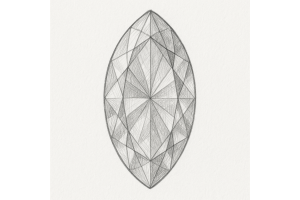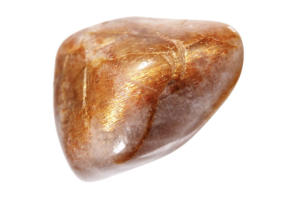GBP
/
GBP
/
Shipping to:
Currency:
Does Carat or Cut Affect How Big a Diamond Looks More?
When it comes to selecting the perfect diamond, two factors often steal the spotlight: carat weight and cut quality.
Both play crucial roles in determining the beauty and appeal of a diamond, but which one truly influences how big it looks?
Let’s dive into the details to uncover the truth behind these essential characteristics.
Understanding Carat Weight
Carat weight refers to the actual weight of the diamond, measured in carats, with one carat equalling 200 milligrams.
Generally, the higher the carat weight, the larger the diamond appears.
However, the relationship between carat weight and size perception isn't quite so straightforward.
While it’s true that a higher carat weight typically translates to a bigger diamond, it’s important to remember that the visual size can be influenced by several factors, including the diamond’s cut.
Therefore, simply opting for a larger carat weight doesn’t guarantee a more impressive appearance.
The Role of Cut Quality
Cut quality is perhaps the most significant factor affecting a diamond’s appearance.
The cut of a diamond determines how well it reflects light, which can enhance its brilliance and sparkle.
A well-cut diamond will not only look larger but also more vibrant, while a poorly cut diamond can appear dull and smaller, regardless of its carat weight.
When considering cut, think about the different aspects involved.
Cut encompasses not just the shape of the diamond (such as round, princess, or oval) but also its proportions, symmetry, and polish.
Each of these elements plays a role in how light interacts with the diamond, ultimately affecting how big it looks.
Comparing Carat and Cut: Which Matters More?
When comparing carat and cut, it’s essential to consider the difference between perceived size and actual size.
For example, a well-cut diamond may look significantly larger than a poorly cut diamond, even if they have the same carat weight.
Imagine two diamonds, both weighing one carat.
One is cut to excellent proportions, allowing it to catch and reflect light beautifully, while the other is cut too deep, causing light to escape from the bottom.
The result?
The first diamond appears more substantial and sparkly, creating a more impressive visual impact.
Visual comparisons can be enlightening, too.
When you see these diamonds side by side, the difference in perceived size becomes clear.
A diamond with a better cut not only looks larger but also commands more attention and admiration.
Factors Influencing Perceived Size Beyond Carat and Cut
Beyond carat and cut, several other factors can influence how large a diamond appears.
Shape of the Diamond
Different diamond shapes can significantly affect perceived size.
For instance, elongated shapes like ovals or marquises can create an illusion of greater size, making them appear larger than their round counterparts of the same carat weight.
This elongation effect can be a fantastic option for those seeking a larger look without necessarily increasing carat weight.
For a variety of options, check out round lab-grown diamonds or oval lab-grown diamonds.
Setting and Band Width
The setting and band width also play a crucial role in how a diamond looks on the finger.
A thin band can make the diamond appear larger and more prominent, while a thicker band can draw attention away from the stone itself.
Choosing the right setting can enhance the visual size of your diamond, ensuring it stands out beautifully.
For inspiration, check out our selection of fancy coloured diamonds that can make a stunning statement in any setting.
FAQs
Does a higher carat weight always mean a bigger-looking diamond?
Not necessarily.
While higher carat weights typically indicate a larger diamond, the cut quality can significantly impact how big it appears.
A smaller, well-cut diamond can look more substantial than a larger, poorly cut diamond.
Can a smaller carat diamond look bigger than a larger one?
Yes, a smaller diamond can indeed look larger than a bigger one, especially if it has a superior cut.
The way light interacts with the diamond can create a greater perception of size.
What diamond cut is best for maximum size appearance?
Round diamonds are known for their brilliance and can often appear larger than other shapes at the same carat weight.
However, shapes like oval and marquise can also create an illusion of size due to their elongated forms.
For options in various shapes, check out our princess lab-grown diamond search or heart lab-grown diamond search.
How does diamond shape influence perceived size?
Different shapes affect how light reflects off the diamond and can enhance or diminish its perceived size.
Elongated shapes tend to look larger, while round shapes may look smaller than their actual size.
Should I prioritise carat or cut when buying a diamond?
It's wise to consider both.
While carat weight gives you the actual size, cut quality enhances appearance.
Striking a balance between the two will lead to a diamond that not only looks stunning but also meets your expectations.
By understanding the intricate relationship between carat, cut, and other influencing factors, you can make an informed decision that results in a beautiful diamond that truly shines.
For an extensive selection of diamonds, don't forget to check out our lab-grown diamonds and fancy coloured diamonds.








